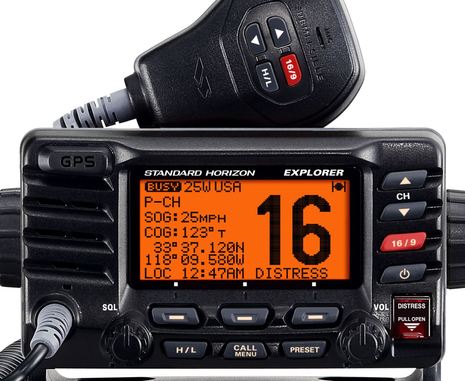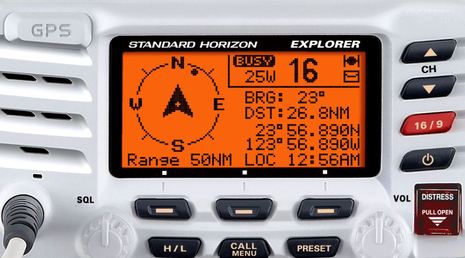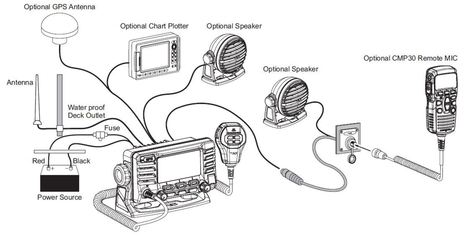Standard Horizon GX1700, finally a fixed VHF w GPS built in

It's not slated to go on sale until February, assuming FCC approval, but it's very likely that the Explorer GX1700, press release here, will be the first fixed VHF radio with a GPS built in. Of course that means that this radio will be easier to install so that the automated distress call under that little protective plate at lower right, and many other DSC features, actually work. A professional installer or DIY boater will only have to wire the GX1700 to 12v power and a VHF antenna, and program it with an MMSI number that can be had easily and free from organizations like BoatUS (unless you plan to cruise outside this country or want to base a Group MMSI on your number, in which case you'll need to deal with the FCC). This radio is also housed in a similarly trim case as the current Explorer GX1600 -- with which it shares many interface and calling features -- and it makes use of its internal GPS in ways beyond DSC...
For instance, the GX1700 can save and provide go-to nav data as shown on the Compass Screen below for up to 100 waypoints, which can be entered manually, captured underway, or gleaned from a DSC call...

And the radio can also output GPS info to a chart plotter as illustrated in the install options diagram below. Note that while the internal GPS antenna is designed into the face of radio so it's not masked if the radio is installed flush, it's still possible to wire in an external GPS antenna if needed.
I'm not sure why it took so long for a manufacturer to put GPS into a VHF, given that it's critical to full DSC functionality and that the little chips must be fairly inexpensive these days, but I understand from SH that "RF shielding and filtering was a challenge so the GPS would not interfere with the VHF receiver." I'll also point out that there's another way to get GPS to a VHF very easily and that's via a plug and play NMEA 2000 port, as demonstrated by Garmin radios like the VHF 200. But then again that set has a suggested retail price of $400 while the GX1700's MSRP will be $230 when it ships. I congratulate Standard Horizon on the GX1700, but I'm hoping that it won't be too long before there are more choices in VHF radios with a GPS, or N2K support, built in.


 Share
Share
Very smart idea. I am waiting for a VHF GPS AIS all together.